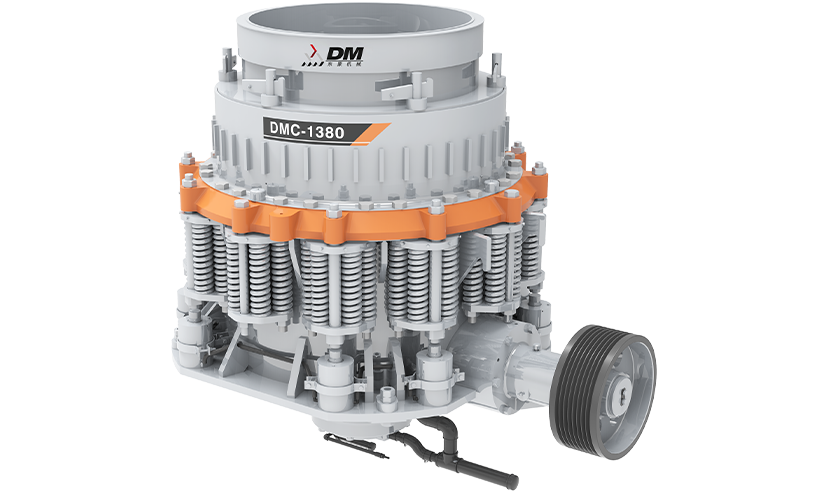Machinery Weight 55-72t
Max Feeding size(mm) ≤700mm
Hopper Volume(m³) /
Significance of Uniform Particle Size in Crushing Operations
Uniform particle size is a fundamental requirement in many industries such as mining, construction, metallurgy, and cement. Consistency in the final product ensures suitable performance in downstream processes like screening, mixing, or material transportation. A China Stationary Crusher, operating in fixed installations, is expected to deliver highly controlled and repeatable results, and this includes maintaining consistent crushing granularity throughout extended use.

Design and Type of Crushing Chamber
The internal geometry of the crushing chamber plays a decisive role in determining the size and shape of the output particles. Stationary crushers are typically designed with symmetrical chambers and carefully angled liners that guide the material through a controlled reduction process. Whether it’s a jaw, cone, or impact type, each design must balance pressure, impact force, and clearance distance to avoid generating an inconsistent product. High-performance China Stationary Crusher models often employ a specific chamber profile optimized for the targeted material and required output size.
Precision in Feed Regulation
Uniform particle size starts with consistent feed input. Crushers cannot maintain output consistency if the input materials vary wildly in size, density, or moisture content. To address this, many modern stationary crushers integrate feed regulation systems such as vibrating feeders or grizzly screens. These systems ensure that the material enters the crushing chamber at a controlled rate and size, reducing surges and blockages that could disrupt uniform crushing. In fully automated systems, sensors monitor the feed characteristics in real-time and adjust the input rate accordingly.
Adjustable Settings and Wear Compensation
Advanced models are equipped with hydraulic or mechanical adjustment mechanisms that allow operators to fine-tune the gap between the crushing surfaces. By controlling this discharge opening, the machine ensures the desired particle size is maintained even as wear and tear occur over time. In cone and impact crushers, setting adjustments can be made dynamically during operation, allowing continuous regulation of output size. Additionally, systems that monitor liner wear help maintain crushing precision by triggering maintenance alerts before dimensional deviations occur.
Screening Integration for Granularity Control
In many installations, a stationary crusher is coupled with a vibrating screen or sizing screen downstream to sort crushed materials based on size. This screening process plays a complementary role in achieving uniformity. Oversized particles are redirected back into the crusher for reprocessing, a method known as closed-circuit crushing. This feedback loop ensures that only material within the desired size range is passed on for further processing, improving overall granularity control.
Automation and Smart Control Systems
The integration of smart automation systems has significantly improved the ability of China Stationery Crusher units to maintain a consistent particle size. Intelligent control units analyze sensor data such as motor load, throughput rate, and vibration levels to detect inconsistencies and make real-time adjustments. Automated systems also reduce the variability introduced by human operation, which can be particularly beneficial in large-scale or round-the-clock crushing facilities.
Material-Specific Configuration Options
Another important factor is the flexibility of the crusher to adapt to different material types. A China Stationary Crusher designed for granite may require different settings than one used for limestone or coal. Manufacturers typically offer multiple liner profiles, rotor designs, and crushing cavity options tailored to specific applications. Choosing the appropriate configuration based on material hardness, abrasiveness, and desired final size ensures better consistency in the end product.
Machinery Weight 53-62t
Max Feeding size(mm) ≤600mm
Hopper Volume(m³) 80-360t/h
Machinery Weight 55-57t
Max Feeding size(mm) ≤215mm
Hopper Volume(m³) /
Machinery Weight 33-35t
Max Feeding size(mm) 150-400t/h
Hopper Volume(m³) 2.5
Machinery Weight 33t
Max Feeding size(mm) 150-400t/h
Hopper Volume(m³) 7m³
Machinery Weight 54-63t
Max Feeding size(mm) ≤600mm
Hopper Volume(m³) /
Machinery Weight 9.5-75t
Max Feeding size(mm) ≤1000mm
Hopper Volume(m³) 61-1204t/h
Just let we know what you want, and we will get in touch with you as soon as possible!